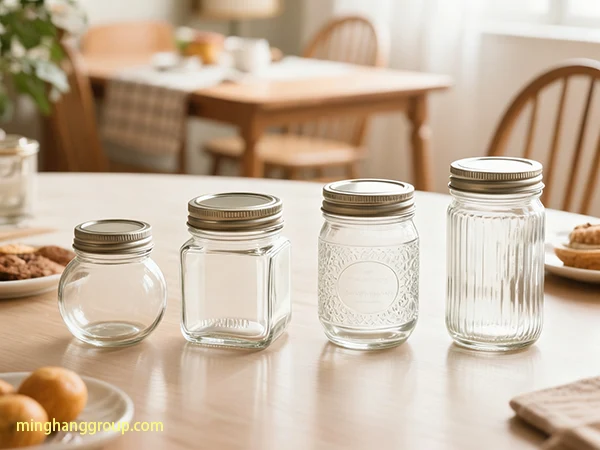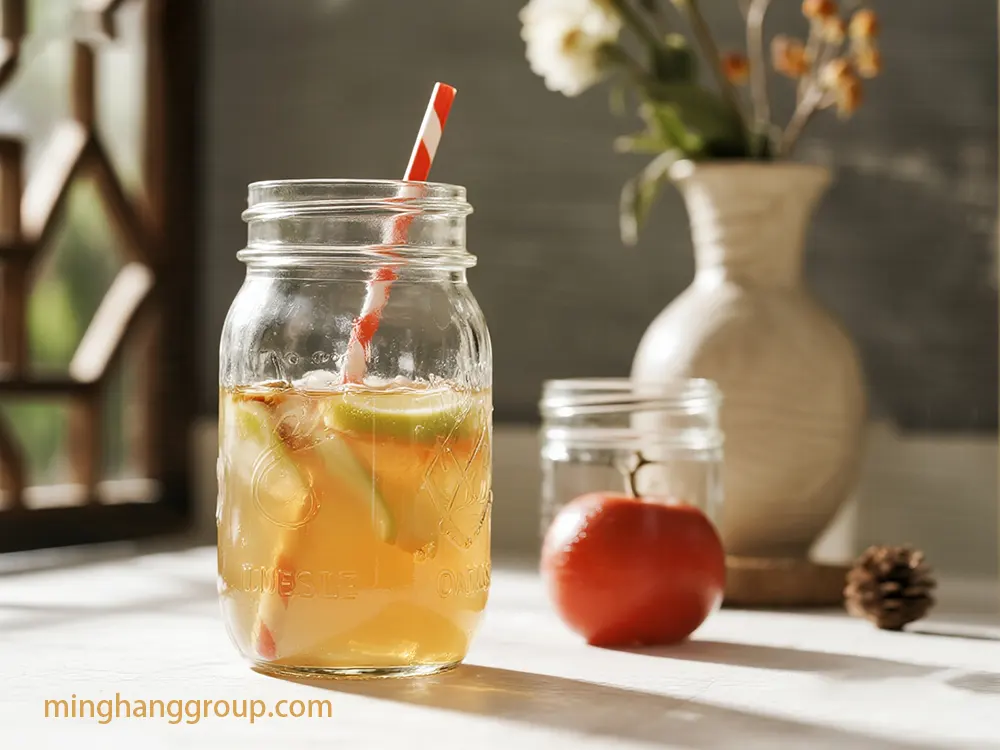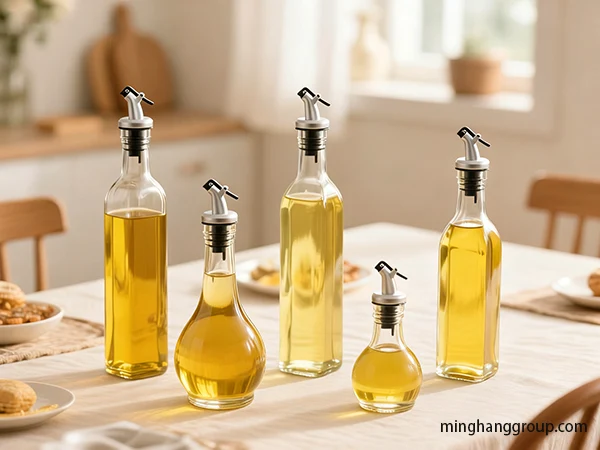Executive Summary
By 2026, the local mason jar factory sector worldwide is anticipating a significant change that will be mainly influenced by the interplay of consumer preference changes, technology trends, and the increased concentration on the environment. This paper acts as a facilitator by reviewing those trends that will steer the industry to its next frontier. We also recognize that the household glass mason jar trend is going to be very trendy with the food preservation, DIY, and eco-friendly lifestyle movements where reusable and aesthetically pleasing glass jars are gaining more and more popularity. Supply will, however, struggle with meeting the demand for better operational efficiency, complex supply chains, and tougher environmental regulations. Innovative factory processes such as highly automated, AI-driven process optimization, and energy-efficient furnace technologies will certainly be the major sources that enable mason jar factories to ramp up production, cut down costs, and improve the quality of their products. Moreover, the sustainability requirement will not only be the key theme of the whole value chain, but also every step in this chain such as raw material sourcing and waste glass recycling, less carbon footprint, and the gradual adoption of the circular economy model. Pre-emptive compliance strategies will be demanded by the tightening of regulatory conditions, particularly with regard to environmental impact and food contact safety. This whitepaper discusses how these changes and the corresponding strategies can help stakeholders navigate the transforming landscape, leverage new openings, and ensure their survival and competitive stance in the long-term glass mason jar factory industry worldwide.

Global Market Dynamics & Consumer Behavior (2026 Outlook)
Solid demand for glass mason jars is expected to continue throughout 2026 due to both long-standing and new consumer trends. The trend of home canning, which was popularized by the economic crisis and the need for personal independence, is the main source of the increased demand. People want to have absolute control over their food sources, ingredients, and preservation methods, so they regard glass jars as the safest food containers and at the same time the best way to try out new recipes. The habit of using glass jars and glass mason jars has gone beyond home canning, and at present, they are used in areas such as dry food storage, meal prepping, decorative items, beverage containers, and eco-friendly packaging for small businesses, thus creating demand for these versatile products beyond the seasonal canning enthusiasts. Consumer wants are moving towards products that stand for eco-friendliness, longevity, and design. As a packaging alternative, glass mason jars fit nicely with the increasing green awareness of the consumers. Glass jars are not only environmentally friendly but also perfectly meet the requirements of minimalism for pantry organization and home décor since they are transparent and of a timeless design. Besides, the demand for different sizes and specification of the designs (e.g., wide-mouth, regular-mouth, different capacities, decorative embossing) keeps on rising as a reflection of varied consumer requirements. From a location standpoint, the North American and European markets will still be very influential in 2026 as the two regions are characterized by well-established practices of home canning and strong DIY cultures. The Asia-Pacific and Latin America areas, on the other hand, have the potential to become new markets in the future as they are showing a pattern of increasing interest in the matter with the rise of disposable incomes and the adoption of western lifestyle trends, including home cooking and food preservation, by consumers. As before, the e-commerce way will be the most important channel for penetrating the market, thus, manufacturers can reach out to a vast number of potential consumers directly and at the same time, be able to offer an extensive range of specialized products.
Factory automation has become a necessity instead of a luxury. Robotics will be everywhere in the production line of any mason jar factory in the future starting from automated batch mixing and furnace loading to precise glass forming, inspection, and packaging. Collaborative robots (cobots) which are designed to work together with human operators, take over the execution of repetitive or ergonomically challenging tasks, thus, the safety of the work environment is enhanced, and the human workers are liberated to perform complex problem-solving tasks. Artificial Intelligence (AI) and Machine Learning (ML) will, by far, be the biggest changes that operational intelligence in a mason jar factory will experience. AI-driven vision systems operate continuously and without fatigue quality control, thus, the identification of defects is done faster and more accurate which leads to less waste and product consistency which in turn gives rise to glass mason jars, glass jars, and glass bottles. Maintenance on the brink of failure is scheduled promptly and infrequently personnel is forced to engage in unplanned machine downtime by means of predictive maintenance algorithms which together with the scheduled upkeep make it the best way to solve the problem of continuous production in any modern mason jar factory.
Energy Efficiency and Sustainable Production Technologies
One of the fab three energetic challenges borne by glass manufacturing is its high consumption of energy. A top-class mason jar factory boards the ship of energy efficiency with oxy-fuel combustion as the main innovation in the furnace guiding the way to less energy use and CO2 output and also better made/formed glass mason jars. To ensure that the mason jar factory stays both environmentally friendly and money-saving, the other devices in this energy chain could be waste heat recovery systems, electrification of certain processes, and renewable energy integration. Moreover, formulations for advanced glass have also been made that help lower a melting temperature without compromising clarity or strength which is also greatly beneficial for glass jars, glass bottles, and glass mason jars.

Supply Chain Resilience & Strategic Sourcing for Mason Jar Factory
Really important for the mason jar factory industry supply chain was the experience of the recent worldwide disruptions that taught a hard lesson with their consequences. In 2026, a company will decide the fate of factories and the future of the sector, they will place first and foremost a plan for risk management in relation to raw material procurement, logistics, and geopolitical instabilities to ward off potential dangers. The production of glass jars needs raw materials (mostly silica sand, soda ash, and limestone), that are abundant generally, however, the quality of these, constant supply, and cost volatility are major issues. Strategic sourcing will be about transforming suppliers into partners and at the same time geographically region-wise spreading them so as to be less dependent on one source and be safer from local disruptions (for example, mining issues, transportation strikes, political instability). There will be more and more long-term contracts with several reputable suppliers thus providing price stability and assured supply volumes. Besides that, vertical integration or strategic partnerships with the providers of raw materials could bring more control and security. Logistics challenges such as increasing transportation costs, fuel price volatility, and port congestion will continue to hinder the mason jar factory industry. To this end, manufacturers will try to optimize their distribution networks by possibly setting up regional production hubs close to the main markets so as to cut the shipping distances and the waiting time. The use of sophisticated logistics software that makes use of AI for routing and predictive analytics for demand forecasting will result in customer satisfaction due to timely correspondence as well as the overall efficiency of operations. Besides, the enabling of transport through railway, sea, and road by investing in multimodal transportation options will be the key to having the needed flexibility and being able to keep the costs at an average rate. Diversification of supply chains is not only for the sake of raw materials but also for that of critical components, machinery spare parts, and energy sources. The creation of a supplier network for the alternative that provides the necessary items will ensure the continuous production of goods even in the worst of times. To add to that, the balancing between the strategic stockpiling of the most important raw materials and finished products and the incurrence of storage costs will be the trade-off of risk management.
Sustainability & Circular Economy Imperatives for Glass Mason Jars
Sustainability is the must-have attribute of glass mason jars in 2026 rather than being the extra feature. It is mainly consumer demand, regulatory pressure, and corporate social responsibility initiatives that are responsible for this shift towards the adoption of environmentally friendly practices and the principles of the circular economy on a large scale. Waste reduction constitutes the centerpiece of the effort. Significant in this is the maximization of using cullet (recycled glass) in the production process. Besides reducing the energy needed for melting, which is the case since recycled glass melts at a much lower temperature than virgin raw materials, high cullet content thus is also a way of saving the planet as it keeps the waste that would have been buried in landfills away from them. By upgrading to modern cullet processing equipments, glass factories insure the purity and uniformity of cullet thus enabling them to increase the cullet percentages in their products. The main objective is to gradually advance from open-loop glass recycling systems towards closed-loop ones where glass mason jars, after being used, are efficiently collected, processed, and returned to the manufacturing cycle. Apart from cullet, glass factories will direct their efforts towards the abatement of their emissions (CO2, NOx, SOx) by employing technologies such as improved furnace design, fuel switching(e.g., natural gas to biogas or hydrogen), and carbon capture. Water, especially for cooling and washing, will be saved too via advanced filtration and recycling systems. One of the main features of the circular economy model is that products are thought of as long-lasting, reusable, and recyclable. Glass mason jars are the perfect example of the model since they are made of strong and completely recyclable materials. Besides, producers can encourage customers to recycle and reuse by telling them the proper way and most probably they will collaborate in organizing collection places. The packaging of glass jars will, as well, be done through recycled and recyclable materials with a reduction in the use of plastic.
Regulatory Landscape & Compliance Challenges for Mason Jar Factory
The regulations governing mason jar factories will be more strict and complicated by 2026, especially in areas of environment, safety of food contact, and international trade. Environmental laws will not only become stricter worldwide but also the standards to be achieved would include reduction of the carbon dioxide emissions, prohibition of the industrial waste, purer air and water quality. Complying with these environmental regulations would require constant inspection, checking, and perhaps, the implementation of new cleaner production methods. Regulations on food contact materials are the most critical for glass mason jars because they guarantee that the glass will not release harmful substances to food. Future changes could affect the standard of heavy metal content, setting of specific migration limits for trace elements, and tougher traceability requirements. Producers have to be equipped with very good quality management systems and possess certificates (e.g., FDA, EU food contact regulations) to be able to prove their conformity. Labeling, i.e. origin, material, and recycling instructions, will also be developed in detail and harmonized among various countries. International trade rules, tariffs, and non-tariff barriers such as very precise product standards and certification requirements will be the main factors that determine the access to markets. The impact of global politics and trade agreements on competitor activities can be so swift that mason jar factories must be very agile while planning their exports.

Strategic Outlook & Recommendations for Mason Jar Factory
The mason jar factory industry in 2026 is influenced by several external factors but is still expected to perform well. The winning factors are innovation, green credentials, and productivity.
Strategic Outlook:
- Demand for mason jars is fueled by consumers’ trend toward self-food-preservation, DIY, and environmentally friendly lifestyles. Profit margins depend heavily on the modernization of production, the quality of the product, and good environmental practices. The companies which fail to innovate or comply with environmental regulations will lose the market.
Actionable Recommendations:
- Digital Transformation: Obtain production, quality control, and energy usage data through AI, robotics, and data analytics.
- Sustainability: Push the limits of recycled glass content in your products; use one or more energy-saving methods for glass melting; and generate electricity from solar, wind, or some other clean source.
- Supply Chain Resilience: Have a plan B supplier ready and stockpile your materials in a balanced manner between JIT and strategic warehousing.
- Regulatory Compliance: Always hold your certifications; keep tabs on regulations; and ensure that your environment and food safety measures are in place.
- Product Innovation & Marketing: Generate new ideas in the size, shape, and features of the container; let customers know that your product is green and high-quality; develop e-commerce channels from which your customers can buy your products and from which you can sell to customers.
By tackling these issues head-on, a mason jar factory can not only survive but also thrive and lead in 2026.




